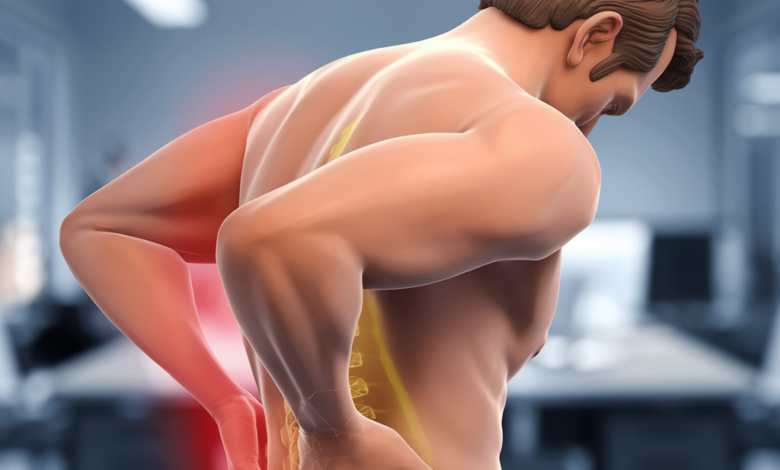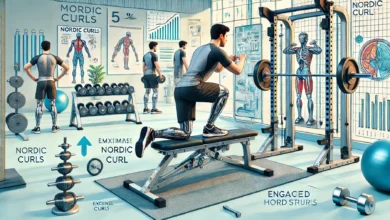How Can Poor Posture Result in Back Pain?

Introduction
We’ve all experienced it: that persistent ache in your lower back or shoulders after hours of hunching over a desk or staring at your phone. It’s easy to dismiss as just another part of modern life, but poor posture plays a significant role in causing and worsening back pain.
What if we told you that small, deliberate adjustments to your posture could dramatically improve your spine’s health and eliminate chronic discomfort? In this comprehensive guide, we’ll explore the science behind posture, the direct links to back pain, and practical strategies for improvement. Let’s dive in and uncover why your posture might be the root cause of your back pain—and how to fix it.
1. What Is Poor Posture?
Poor posture refers to the misalignment of your body when sitting, standing, or moving, causing undue strain on muscles, ligaments, and joints. It disrupts the natural alignment of your spine, leading to stress on various parts of your body.
Examples of Poor Posture:
- Slouching: Sitting with rounded shoulders and a curved lower back.
- Forward Head Posture: Often called “text neck,” this happens when your head leans forward, increasing stress on your cervical spine.
- Crossed Legs or Imbalanced Sitting: Sitting with your legs crossed or leaning to one side for extended periods.
- Prolonged Standing with Sway Back: Standing with hips pushed forward and shoulders slouched.
These positions might feel comfortable temporarily, but over time, they create significant stress on your musculoskeletal system, leading to pain and discomfort.
2. Anatomy of the Spine and Its Connection to Posture
To understand the impact of poor posture, it’s essential to grasp the basics of spinal anatomy.
The human spine is made up of 33 vertebrae, divided into three major regions:
- Cervical Spine (Neck): Supports the head and facilitates movement.
- Thoracic Spine (Mid-back): Anchors the ribcage and protects vital organs.
- Lumbar Spine (Lower Back): Bears most of your body weight and absorbs impact.
Each of these regions has a natural curve designed to distribute weight evenly and minimize strain. Poor posture alters these curves, leading to:
- Flattening of Curves: Prolonged slouching flattens the lower back’s curve, increasing pressure on the lumbar spine.
- Overextension: Sitting or standing incorrectly can overextend the neck and lower back, straining the muscles and ligaments.
This misalignment causes uneven weight distribution, resulting in muscle fatigue, joint stress, and eventually pain.
3. How Poor Posture Causes Back Pain
Poor posture is more than just a bad habit—it actively contributes to back pain by disrupting the body’s natural mechanics.
Here’s How It Happens:
- Increased Disc Pressure: Slouching compresses the intervertebral discs, increasing the risk of bulging or herniated discs. Over time, this can lead to conditions like sciatica, where nerve compression causes radiating pain down the legs.
- Muscle Strain and Imbalances: Poor posture forces some muscles (like those in the neck and lower back) to work harder, while others weaken from underuse. This imbalance can result in chronic stiffness and spasms.
- Restricted Joint Mobility: Misalignment reduces the range of motion in spinal joints, making everyday movements painful and difficult.
- Decreased Blood Circulation: Slouching restricts blood flow to muscles and spinal tissues, leading to fatigue, stiffness, and delayed healing of micro-injuries.
4. Long-Term Consequences of Poor Posture
Ignoring poor posture can lead to more severe and long-lasting health issues, including:
- Chronic Back Pain: The repetitive strain from poor posture can turn occasional discomfort into chronic pain.
- Degenerative Spinal Conditions: Over time, bad posture accelerates wear and tear on spinal joints, leading to conditions like osteoarthritis.
- Kyphosis: A hunched back caused by prolonged slouching, resulting in permanent spinal curvature.
- Nerve Compression: Pinched nerves, particularly in the cervical and lumbar regions, can cause pain, numbness, and weakness in the arms or legs.
- Impact on Internal Organs: Slouching can compress internal organs, reducing lung capacity and impairing digestion over time.
5. How to Improve Posture and Reduce Back Pain
The silver lining is that poor posture can often be corrected with consistent effort and lifestyle changes. Here’s a roadmap to better posture and reduced back pain:
1. Ergonomic Adjustments:
- Use a chair with lumbar support to maintain your spine’s natural curve.
- Position your monitor at eye level to prevent forward head posture.
- Ensure your feet rest flat on the floor and your knees are at a 90-degree angle when seated.
2. Regular Breaks and Stretching:
- Follow the 20-20-20 rule: Every 20 minutes, look 20 feet away for 20 seconds to prevent neck strain.
- Incorporate standing and stretching breaks every hour to loosen tight muscles.
3. Strengthen Key Muscles:
- Core Exercises: Planks, bridges, and bird-dogs help stabilize the lower back.
- Postural Strengthening: Perform exercises like rows, reverse flies, and wall angels to strengthen upper back and shoulder muscles.
4. Practice Mindfulness:
- Be aware of your posture throughout the day. Remind yourself to sit tall, keep your shoulders relaxed, and engage your core.
- Consider apps or posture trackers that provide real-time feedback.
5. Seek Professional Help:
- A physical therapist or chiropractor can identify postural issues and design a tailored exercise program.
- Massage therapy can relieve muscle tension and improve alignment.
Conclusion
Poor posture might feel harmless at first, but it sets the stage for back pain, stiffness, and even chronic spinal conditions. The good news? With a proactive approach, you can reclaim your spinal health. By making small adjustments to how you sit, stand, and move, you can prevent pain and even reverse some of the damage caused by poor posture.
FAQs
- Can poor posture cause permanent damage to the spine?
Yes, if left uncorrected, poor posture can lead to irreversible conditions like kyphosis and degenerative disc disease. - How can I tell if my posture is bad?
Common signs include slouched shoulders, forward head posture, and frequent back pain. Consulting a physiotherapist can provide clarity. - What are the best exercises to improve posture?
Exercises like planks, bridges, wall angels, and seated rows strengthen the muscles that support good posture. - How long does it take to correct poor posture?
It depends on the severity, but consistent effort often leads to noticeable improvements within 4-8 weeks. - Are posture correction devices helpful?
While not a permanent solution, they can provide reminders and support as you build better postural habits.
Read More
By-the-Yard Strands vs. Traditional Necklaces: What’s the Difference?




